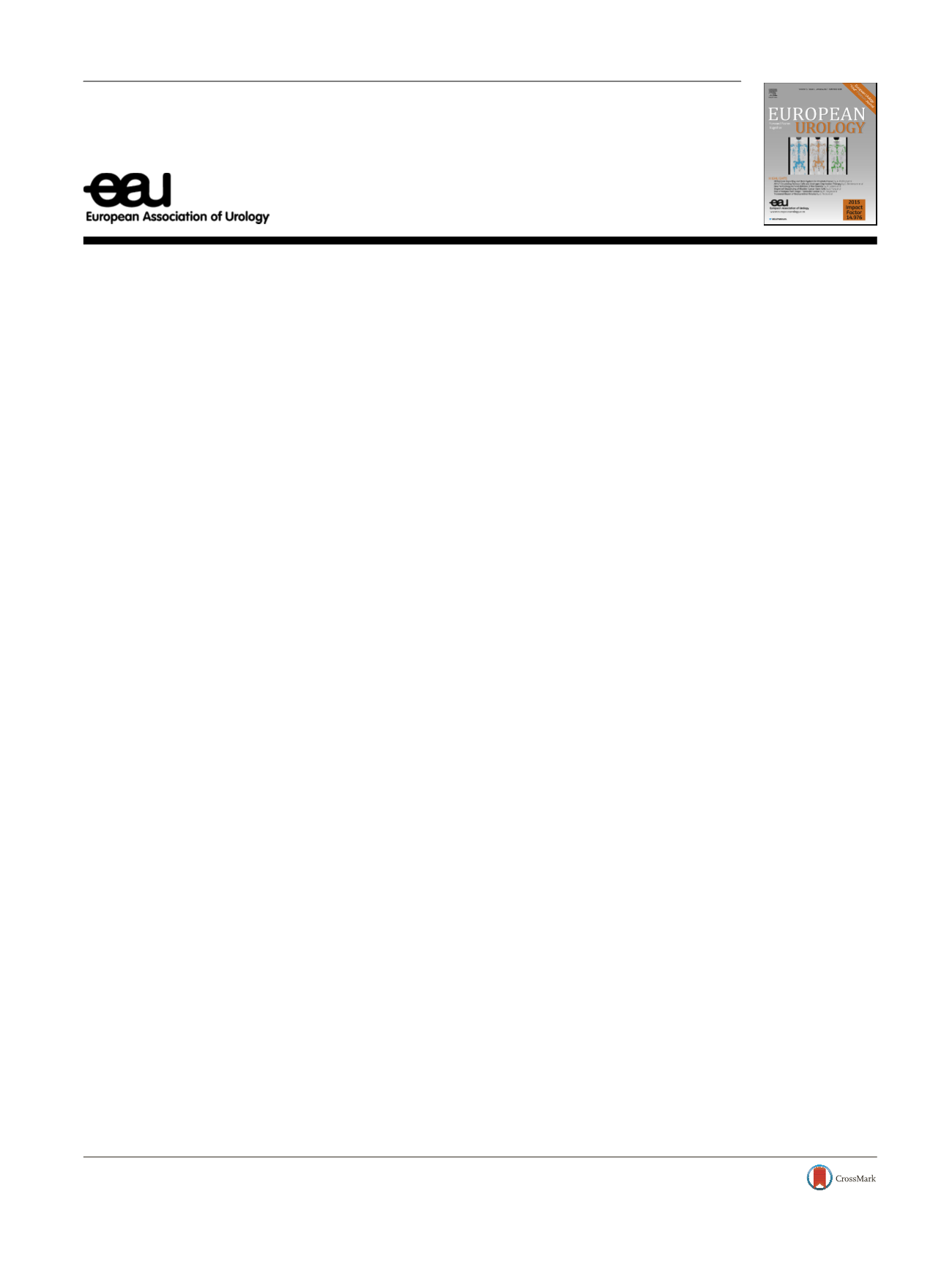

Platinum Priority – Editorial
Referring to the article published on pp. 723–726 of this issue
Upholding Rigorous Standards: Comparable Patterns and Rates of
Recurrence Between Open and Robot-assisted Radical Cystectomy
Nieroshan Rajarubendra, Monish Aron
*USC Institute of Urology, Keck School of Medicine, University of Southern California, Los Angeles, CA, USA
Robot-assisted radical cystectomy (RARC) has seen remark-
able growth in the last decade
[1]. The technique is evolving
and outcomes have been evaluated in several retrospective
studies. To date, four prospective randomized trials have
been published comparing outcomes between RARC and
open radical cystectomy (ORC)
[2–5]. All of the randomized
trials so far have shown at least equivalence in outcomes,
but most of the diversions in these trials have been
performed in an extracorporeal fashion. There are not too
many centers in the world that routinely perform totally
intracorporeal RARC, and hence multicenter collaboration is
critical in this arena. In this issue of
European Urology
,
Collins and colleagues
[6]report on a multicenter study
from the European Robotic Urology Section (ERUS) scien-
tific working group that focuses on early recurrence
patterns following totally intracorporeal RARC.
Data
[3_TD$DIFF]
was pooled from nine different European centers,
resulting in a cohort of 717 patients, treated by surgeons
with varying techniques and levels of experience. One needs
to keep in mind that recurrence rates and patterns can vary
depending on individual surgeon expertise and experience.
It would be interesting to see such stratification after
correcting for stage, grade
[4_TD$DIFF]
, variant histology, and adminis-
tration of neoadjuvant chemotherapy. Tabulation of insti-
tutional origin of the cases would be interesting to see
where the bulk of the operations were performed. To the
authors’ credit, they do acknowledge that the study is
retrospective and has selection bias.
Technique and experience with totally intracorporeal
RARC
[5_TD$DIFF]
has been evolving over the years. It has been shown
that increasing experience improves not only efficiency but
also outcomes
[7] .We agree that a skillfully performed
RARC is as robust an operation as a skillfully performed ORC
in the hands of equally experienced surgeons who treat
bladder cancer routinely. It is heartening to see that the
recurrence patterns in this series are similar to those for
ORC, even when cases during the surgeons’ learning curve
are included. It is impressive to see low positive surgical
margins even during the surgeons’ learning curve, including
for T3 and T4 disease. This could potentially be attributed to
mentoring by more experienced surgeons and possibly
prior experience with robotic pelvic surgery, and ORC,
providing a smoother transition
[8]. In addition, it
is possible that the cases in the lower-volume centers
were performed more recently, and these surgeons
benefited from established, published techniques and
experiences with intracorporeal diversion.
A previous paper published by Nguyen et al
[9]reported
a higher rate of recurrence in extrapelvic lymph nodes and
peritoneal carcinomatosis for RARC compared to ORC.
However, the same group published an updated report
earlier this year after accruing further cases, and indicated
that there was no difference in the patterns of recurrence
between the robotic and open groups
[10] .They concluded
that the main factor that influenced recurrence was the
pathologic tumor characteristics and not the surgical
technique.
The present study showed that positive lymph node
status, extravesical extension, and positive surgical margins
are associated with early tumor recurrence
[6]. Neoadjuvant
chemotherapy was utilized in only 25% of patients in this
study
[6]. It would be interesting to see if such therapy can
impact recurrence patterns. There were no unusual recur-
rence patterns attributable to RARC. The incidence of
E U R O P E A N U R O L O G Y 7 1 ( 2 0 1 7 ) 7 2 7 – 7 2 8ava ilable at
www.sciencedirect.comjournal homepage:
www.eu ropeanurology.comDOI of original article:
http://dx.doi.org/10.1016/j.eururo.2016.10.030.
* Corresponding author. USC Institute of Urology, Keck School of Medicine, University of Southern California, 1441 Eastlake Ave, NOR 7416, Los Angeles,
CA 90033, USA. Tel. +1 216 5025958; Fax: +1 323 8655530.
E-mail addresses:
monisharon@hotmail.com , monisharon@yahoo.com(M. Aron).
http://dx.doi.org/10.1016/j.eururo.2016.11.0090302-2838/Published by Elsevier B.V. on behalf of European Association of Urology.
















